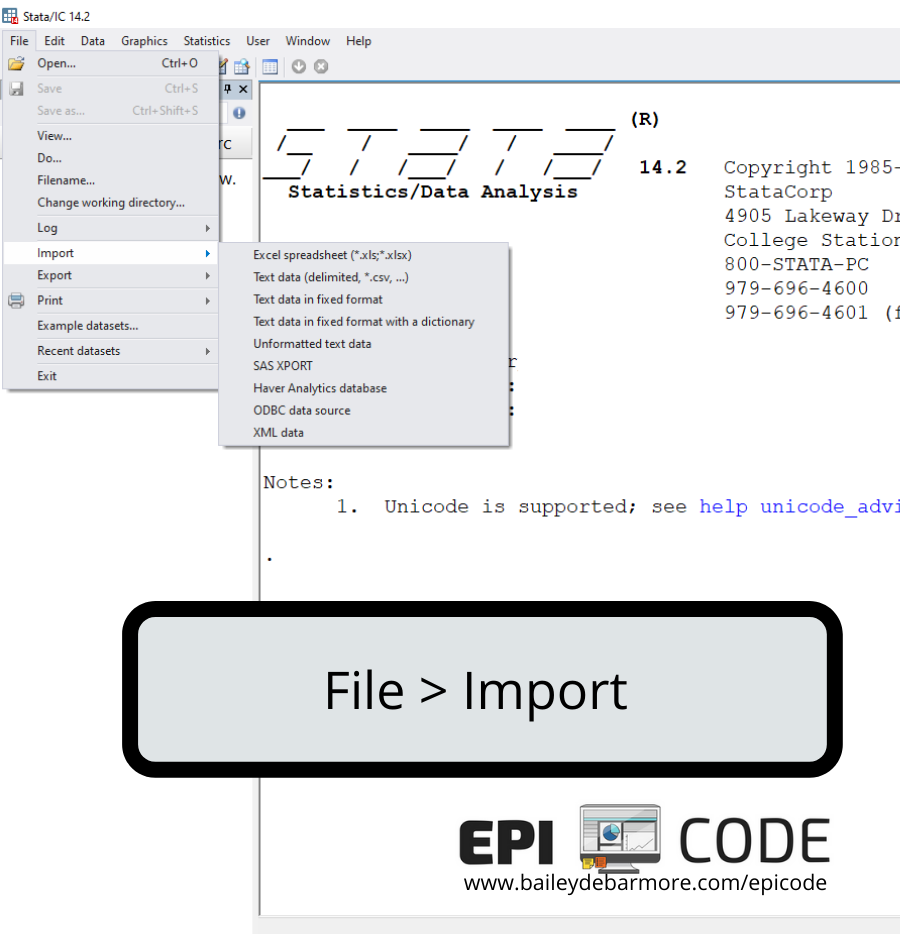
Insert all your commands to a do-file (such as the example above), run it and inspect (look at) the. If there is stuff, it will be in the directory or folder identified. All Stata analyses should be done using do-files. If they are text files, Stata's doedit or any text editor will do.īut if you are expecting that Stata saves the do-file editor window contents in a temporary file of its own, independently of any tempfile declaration made by you, and in a form that you can recover the contents, then my guess is that you will find nothing. Do-files let the user better proof work and find errors.

Replicability enables others to help when the user cannot find why the program isn’t working. But the main question here is how do I recover files, and the answer does depends on what the temporary file(s) are holding. Replicability confirms the integrity of the user’s work and helps it stand up to questioning. Or click on the notepad icon below the menus. Using the menus go to WINDOW DO-FILE EDITOR, NEW DO-FILE. There are several ways to open, view and edit do les. 2 do tutorial1would run all of the analysis for this particular tutorial. In fact the email you cite from Alan Riley does explain this. You can execute a do le like this do intro. If you try to use a file and the file in memory has unsaved changes, you need to use the clear option to tell Stata that you want to discard the changes. If you want to save a file over an existing file, you need to use the replace option, e.g., save auto, replace. (In fact, we do not need really to create one, just assign a handle.) Stata tries to protect you from losing your data by doing the following: 1. Moreover, that ado file should contain a Stata program with the name -myprogram. Basically, if you have an ado-file named myprogram.ado, you have, in effect, created a command -myprogram- that you can invoke and use just like any other Stata command. Next use the translate command (shown in the blog above) to convert your file to a pdf. Add the command at the end to close your log file. Start the do-file with the command to create a log file. The puzzle is: Where does Stata put temporary files? The answer is: Create one, and see where it is on the system. Ado files are usually used for programs of some generality. at the bottom of my do-file: log close translate Stata Log for module 4 examples-BLR.log Stata Log for module 4 examples-BLR.pdf.

I explain this second, because the thought process behind the first solution should be less esoteric. Whether they are as you wish them to be is a different question. Now it is between you and your operating system to find those files if they still exist. The important part is the filepath, which will show you where Stata stores temporary files on your system. To replace a log file add the option “replace”, This command will delete the comments of the previous version of the file.Then Stata will show you the name it has allocated for a temporary file (which does not yet exist). to do for your loop to run properly in Stata.An option “append” is used to add more commands or output to an existing log file.Steps to create a log file: We can make the log file by using the log command and log close or Go to File option, click log, and then you can begin your log file which contains both command and the results. The directory that contains the master do-file is the master directory. The typical set up is to have a master do-file which runs nested do-files, each of which can also run nested do-files, and so on. Log-files are the Stata output files that have both commands and output. It automatically changes Stata's current directory to the one that contains the currently running do-file. Or, by clicking on “Do…” in the “File” menu within Stata and clicking on the “.do file”. Or by beginning the do file in the do-file editor.

Steps to start to do file: A do-files can be executed by typing in the command window: do file_name If one wants to save commands for future analysis, altering the relevant commands in the do-file is much convenient than having to start back at square one, which is required when working interactively. There are many advantages in the long run of maintain do-files rather than typing commands with the keyboard or using dialog boxes. It is a text file that is prepared for storing all the commands so that sharing the commands or editing becomes easy.
DO FILE STATA SERIES
A do-file is a document having series of commands to be executed in a particular sequence in Stata.


 0 kommentar(er)
0 kommentar(er)
